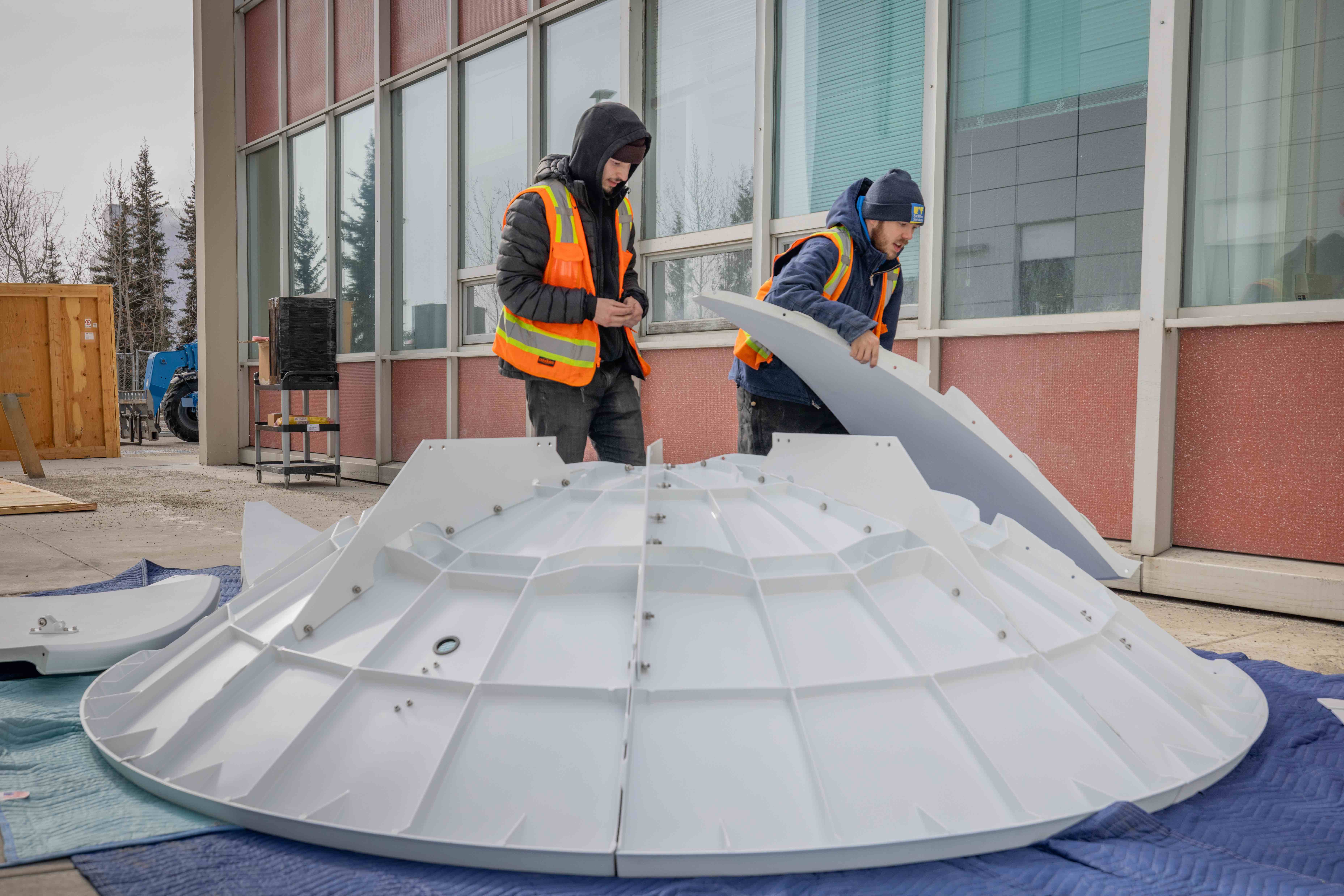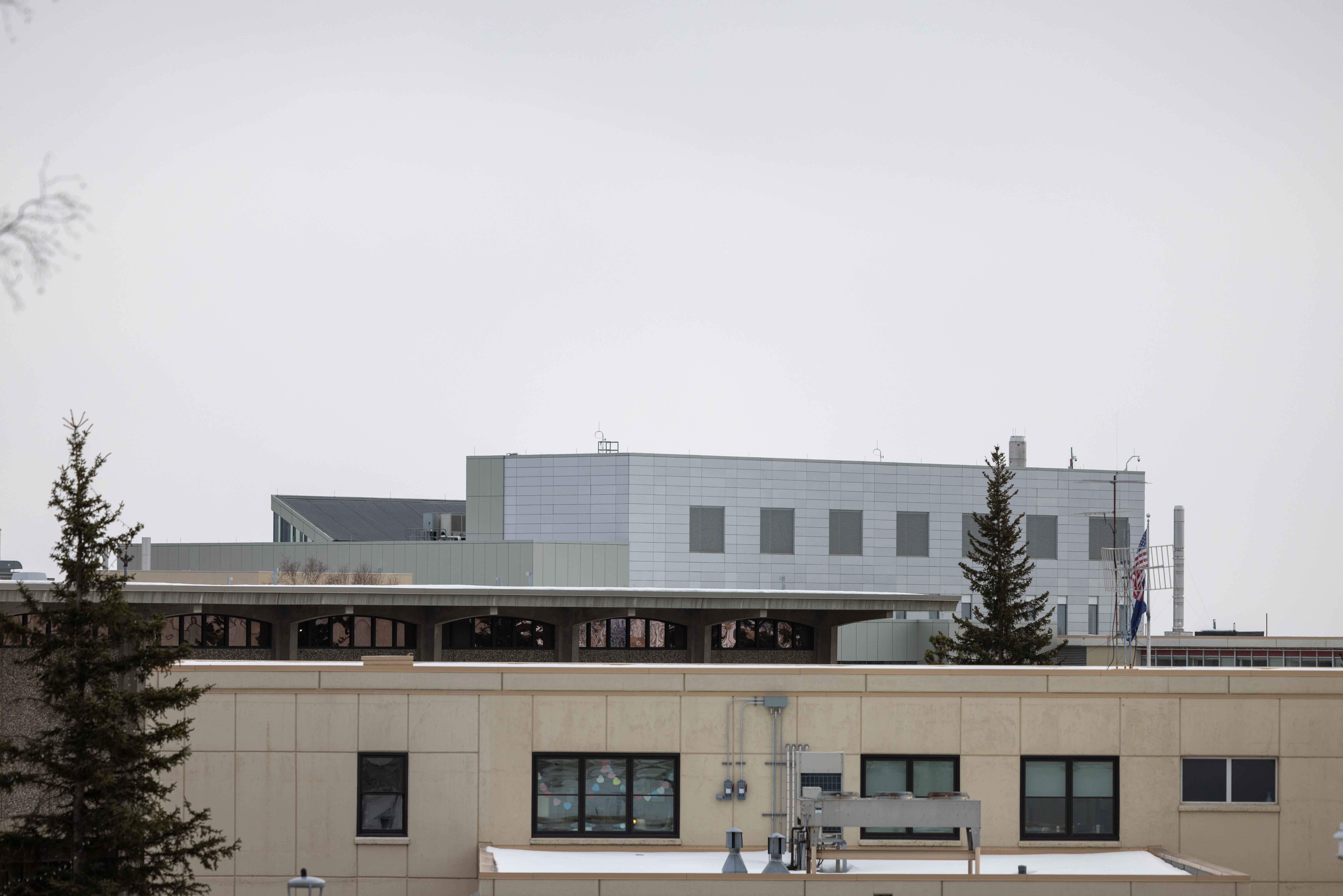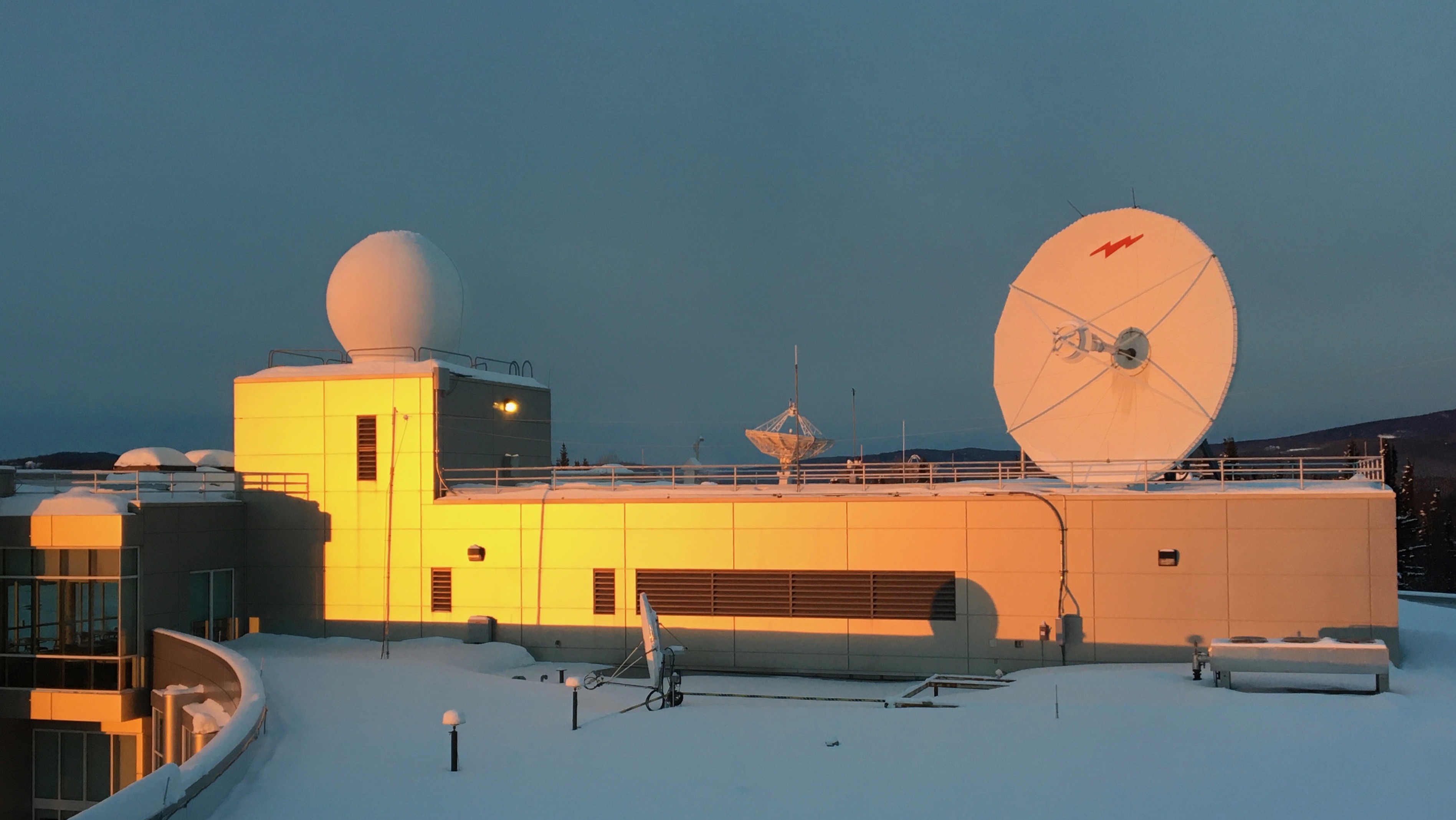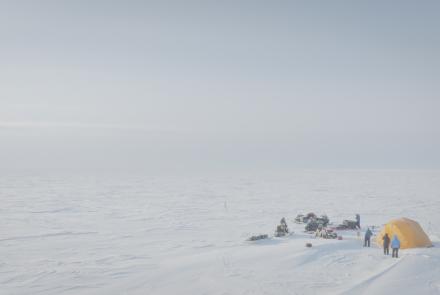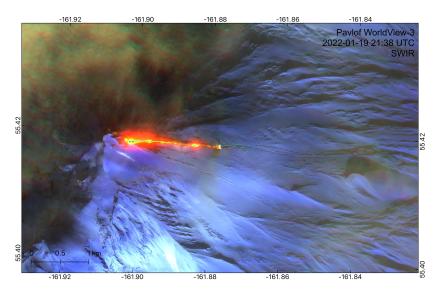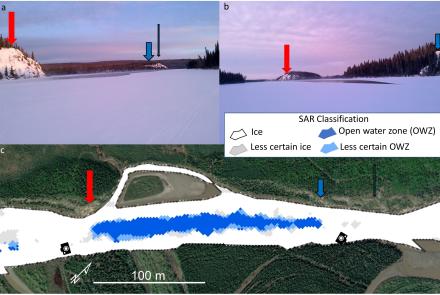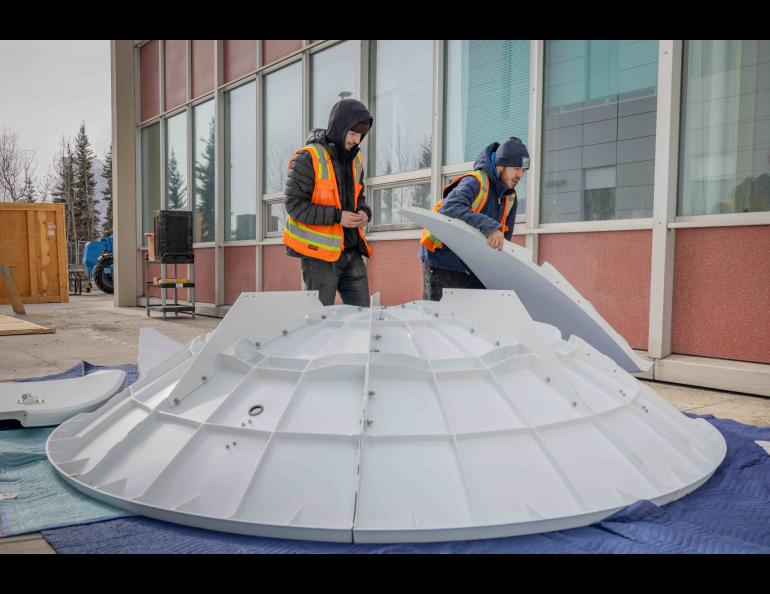
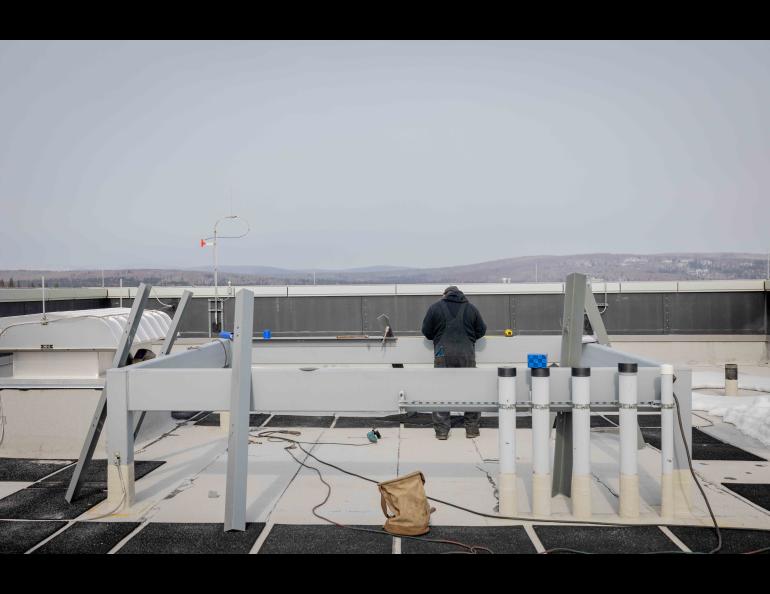
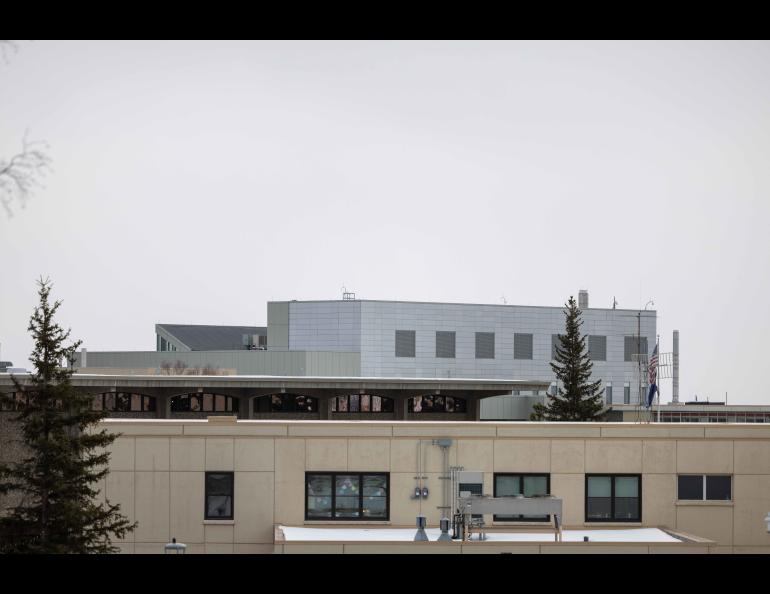
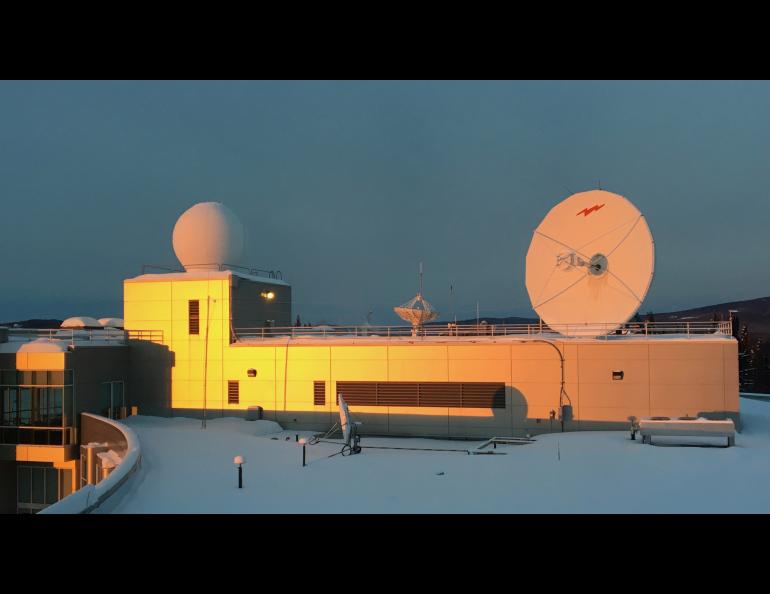
New rooftop antenna to be installed on UAF Usibelli Building
A new 3-meter antenna will be installed atop the University of Alaska Fairbanks’ engineering building as early as Saturday.
The antenna is for the Geographic Information Network of Alaska, a unit of the UAF Geophysical Institute, and will eventually replace the domed antenna atop the Akasofu Building on the university’s West Ridge. That 23-year-old antenna will be repurposed for educational activities.
“We’re getting a new antenna with new technology, and it will have a lifetime of 25 years,” GINA Director Jennifer Delamere said. “The antenna will be used to downlink data from the Joint Polar Satellite System constellation of satellites as well as satellite data from European and Japanese partners.
“The new antenna will improve weather forecasting and environmental monitoring for Alaska,” she said.
JPSS, operated by the National Oceanic and Atmospheric Administration, is vital for Alaska, Delamere said.
“These JPSS satellites and the powerful instruments they carry are the most versatile observational assets we have for weather and hazard detection in the state of Alaska,” she said. “They provide frequent coverage and cover wide areas.”
The Visible Infrared Imaging Radiometer Suite aboard JPSS, for example, is a primary source of active fire detections for Alaska, Delamere said. The instrument suite collects visible and infrared images.
“Whether it be rain in Southeast, wildland fires in the Interior, sea ice in northern Alaska or volcanoes in the North Pacific, JPSS instruments are there to observe it,” she said.
The new antenna’s components arrived at UAF on March 20. Assembly began earlier this week.
A crane will lift the antenna into place atop the Usibelli Building, which was built with two rooftop platforms designed for antenna placement.
The new antenna will have greater capability than the one it is replacing. The Akasofu Building antenna operates in the X band — microwave signals — and receives data from four satellites, including those of the Joint Polar Satellite System.
In addition to the X band, the new antenna will use the L band, which is also in the microwave range but with lower-frequency signals. The antenna will function in the same manner as GINA’s antenna at NOAA’s Fairbanks Command and Data Acquisition Station at Gilmore Creek north of Fairbanks. That antenna downlinks data from 10 satellites and will do so for satellites to be launched within the next two years.
X-band frequencies are commonly used in radar systems, satellite communications, weather monitoring and military applications. They allow for higher data transmission rates and better resolution compared with lower frequency bands.
L-band frequencies are used for applications such as GPS navigation, mobile satellite communications and aviation communication systems. L-band signals have good penetration capabilities through various atmospheric and environmental conditions.
Having two antennas at GINA is essential to accommodate the high number of weather satellites passing over Alaska daily. It’s also essential to have two in case one fails.
“This data is so important that if we only had one antenna and that antenna were to be down for days due to a mechanical failure or disabled because someone dug up a network cable, it would be a critical loss for the state,” Delamere said.
The GINA team uses satellite measurements of visible, infrared and microwave radiation from Earth to produce maps and imagery of Alaska weather and fire. The products are used in near real-time monitoring of the environment of Alaska and adjacent oceans.
Many government agencies use products that GINA creates, including the National Weather Service’s Alaska Sea Ice Program, Alaska Aviation Weather Unit and regional NWS forecast offices, the U.S. Bureau of Land Management’s Alaska Fire Service and the Alaska Interagency Coordination Center. Alaska Volcano Observatory, a joint program of the UAF Geophysical Institute and the U.S. Geological Survey, also uses GINA products.
• Jennifer Delamere, University of Alaska Fairbanks Geophysical Institute, 907-474-7140, jsdelamere@alaska.edu
• Rod Boyce, University of Alaska Fairbanks Geophysical Institute, 907-474-7185, rcboyce@alaska.edu

